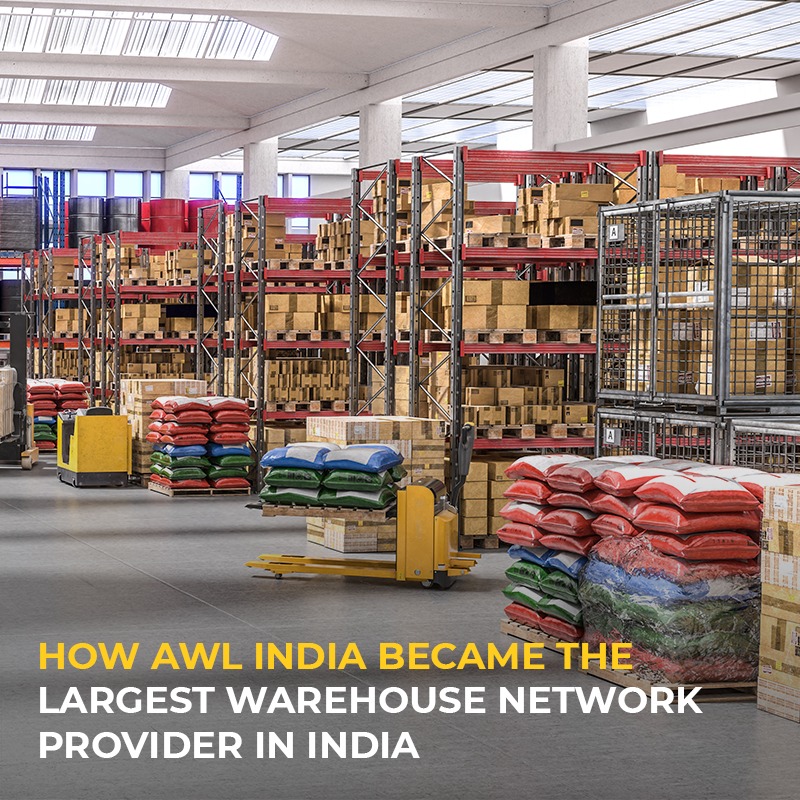AWL India is the leading logistics company, with solutions ranging from smart warehouses to shipping goods on short notice. Incorporated in 2007, AWL India started with their headquarters in Gurgaon with the vision of becoming a global supply chain and logistics provider. AWL India offers unparalleled logistics and supply chain solutions with 100% efficacy which helps in building healthy customer relationships. According to studies, supply chain technology is also becoming an important component of the sector. Therefore, leaving the work to experts is always a good idea.
The leading experts in the country, AWL India uses modern day technology to provide warehousing and logistics solutions that are termed as logistics automation. Aimed to improve the efficiency of the complete logistical processes right from procurement to inventory management and the final distribution. Moreover, these automation services can be especially customised according to the customers requirements. AWL India has looked into the market and identified the challenges that are being faced by businesses and aids out in overcoming those challenges.
What Are The Challenges You Confront As A Business in India?
Let’s discover these challenges in depth to get a more clear vision on the issue. Over the recent years, especially after the COVID times, there has been a drastic boost in the demand for warehouses in the country. AWL India utilises cutting edge technology in their warehouses and assists your business in conquering all the obstacles. Earlier, accidents, human mistakes, delivery delays owing to labour concerns, high costs, and time-consuming operations were the only obstacles that were faced by warehousing businesses in India. However, in the present era, you can make your warehouse cost efficient by simply utilising technology such as automation, RFID tagging, warehouse management systems, etc.
This 3PL Warehousing sector has grown from 18% in FY 2017 to 31% in FY 2021. Moreover, in order to be able to apply the right technology it is important to first learn about the challenges that are being faced by warehousing businesses today. Following are some of the challenges encountered in warehousing business:
Layout & Organisation of Warehouse
The layout of the warehouse is the most significant consideration when choosing a location for a warehouse. The warehouse layout is a critical component that is responsible for the majority of incidents that occur within a warehouse. Workers become more aware of where the commodities are going and arriving from when a badly planned warehouse layout and supply flow are optimised. As a result, the possibilities of an accident occurring in the warehouse are reduced. A company may employ current technologies, like automation, to optimise and increase the overall efficiency of the warehouse.
Inventory Control Management Systems
Inventory management and tracking are essential components of warehouse management. Human mistakes are eliminated with automated inventory management. Unsuccessful deliveries are a waste of money and manpower. Without automation, products must be physically inspected before each delivery. Delayed or incorrect delivery squander human labour on a far greater scale. Using RFID technology and warehouse automation to speed up the delivery process can assist meet delivery deadlines while also lowering costs and human labour.
Optimisation of Resources
Walking and hand selecting orders might account for up to half of total delivery time. In such an atmosphere, picking the wrong component might potentially disrupt the entire supply chain management process. Efficient picking can increase production while decreasing the likelihood of human mistake. Using a warehouse management system (WMS), the stated products will be automatically picked and the inventory levels will be shown in real time. By inspecting the status of orders, the systems can also identify an increase in demand for a certain product. To improve the accuracy of the choosing process, you may also provide the shipment time and total number of products to be kept. This aids in the management of warehouse inventories.
Labour Costs
You can minimise your labour expenses and increase productivity at the same time by implementing automation. Warehouses can have automation at nearly every step, from docking to packaging orders, minimising human labour in the warehouse. In contrast to human employees, Automated Guided Vehicles (AGVs) can do repetitive manual activities, minimising the demand for human labour in the warehouse. These autonomous guided vehicles navigate a warehouse using digital pathways and may load and unload boxes, pallets, and other containers for more efficient and cost-effective commodities handling. This not only lowers the cost of goods handling but also ensures the products’ complete safety.
Gain A Competitive Advantage With AWL India’s Smart Warehousing Solutions
AWL offers the latest warehousing technologies for your business that can help you gain a competitive advantage. AWL India is the leading logistics company which currently delivers to more than 1000 malls and hospitals throughout the country. In the words of Rahul Mehra , CEO of AWL India “Trade is not about goods but automation. Today, goods just simply sit in the warehouse until technology moves them.” These technologies can be used to tackle the issues that warehouses confront today. Among the most commonly used warehouse technologies are:
Automated Picking
The warehouse can benefit from automation in terms of item picking. To automate the choosing process, a variety of tools may be employed. This not only saves time but also a lot of human work. These technologies, when coupled with your integrated warehouse management system, may completely automate the operation.
Vehicles with Automatic Guidance (AGVs)
Human labour is not only slower than automated procedures in storing and retrieving things from their specified places, but it is also more risk averse. When compared to traditional personnel, autonomous guided vehicles are far more efficient and safer. On the other hand, it is a far more efficient choice for generating a return on investment than human labour. Furthermore, these trucks may be utilised to rack stocks and do other storage tasks.
Implementation of Internet of Things (IoT)
The Internet of Things, or IoT, is a broader idea than a single technology that, when used to control a vast number of moving elements, both automated and manual, may optimise the entire process. Its data is stored in a single, easy-to-access network, which aids in the optimization of a warehouse’s inventory management process, which enhances the entire customer experience through faster fulfilment.
Platforms for Automated Inventory Control
These automated inventory control platforms may save a significant amount of time and human labour by using accurate inventory tags. Aside from that, these systems are built in such a way that they can count inventory and analyse data in real time for rapid and accurate inventory management.
On A Final Note
AWL India can simply optimise your warehouse and overcome all of these obstacles with new, continuously emerging technology. RFID tags, automated packing of goods, and automated guided trucks are all examples of technology that improve the efficiency of the warehouse management system, making the warehouse more cost efficient and thereby increasing turnover. Companies like AWL India, which has been in business since 2007, can handle all of your warehouse optimization and warehouse automation needs. Warehouse optimization might aid in the survival of your company in a continually changing industry. Furthermore, you may have complete control over your logistical operations.























